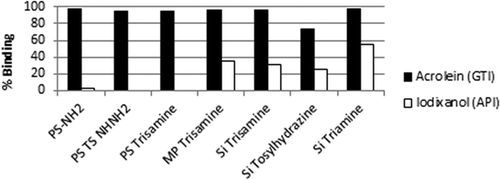Simple new way to clean traces of impurities from drug ingredients

Scientists are reporting development of a simple new procedure for removing almost 98 percent of an important impurity that can contaminate prescription drugs and potentially increase the risk for adverse health effects in patients. Their report appears in ACS' journal Organic Process Research & Development.
Ecevit Yilmaz and colleagues note that contamination of medications with so-called "genotoxic" impurities (GTIs) have resulted in several major recent drug recalls. GTIs may be ingredients used to make drugs, or they may be formed during production of drugs, and can remain in the final product in minute amounts. The presence of one GTI in the anti-viral medication Viracept distributed in the European Union forced a recall in 2007. With GTIs an ongoing serious concern for the pharmaceutical industry, the scientists sought a better way to remove an important GTI called acrolein.
They describe development of a way to remove acrolein by using engineered particles based on silica and polystyrene. Mixing the particles in a drug solution contaminated with acrolein for 20 minutes resulted in removal of nearly 98 percent of the GTI without any substantial removal of the active pharmaceutical ingredient. They note that while the separation materials are readily available, there may be the need for more research on the method before using it to clean up pharmaceuticals on a commercial basis.
More information: “Removal of Acrolein from Active Pharmaceutical Ingredients Using Aldehyde Scavengers” Org. Process Res. Dev., 2012, 16 (6), pp 1225–1229. DOI: 10.1021/op3000459
Abstract
A variety of chemical compounds, intermediates, and reagents are used during the process of synthesizing active pharmaceutical ingredients (APIs). Some of these chemicals, intermediates, and reagents, as well as byproducts of synthetic processes, can have toxic properties and be present as impurities at low levels in the API or final drug formulation. If present at high concentrations, the toxic impurities could cause adverse health effects in humans. This paper describes a simple and rapid approach for selective removal of acrolein from APIs using iodixanol as a model API. Several scavengers were tested, and the resins which showed highest binding efficiency and selectivity were chosen for further evaluations. The kinetics of acrolein scavenging in the presence of the API iodixanol and the scavenging capacity of resins were demonstrated in this paper. The most complete scavenging is obtained with PS-NH2 which removes 97.8% of acrolein without any substantial removal of the API during 20 min of reaction time.
Journal information: Organic Process Research & Development
Provided by American Chemical Society

















